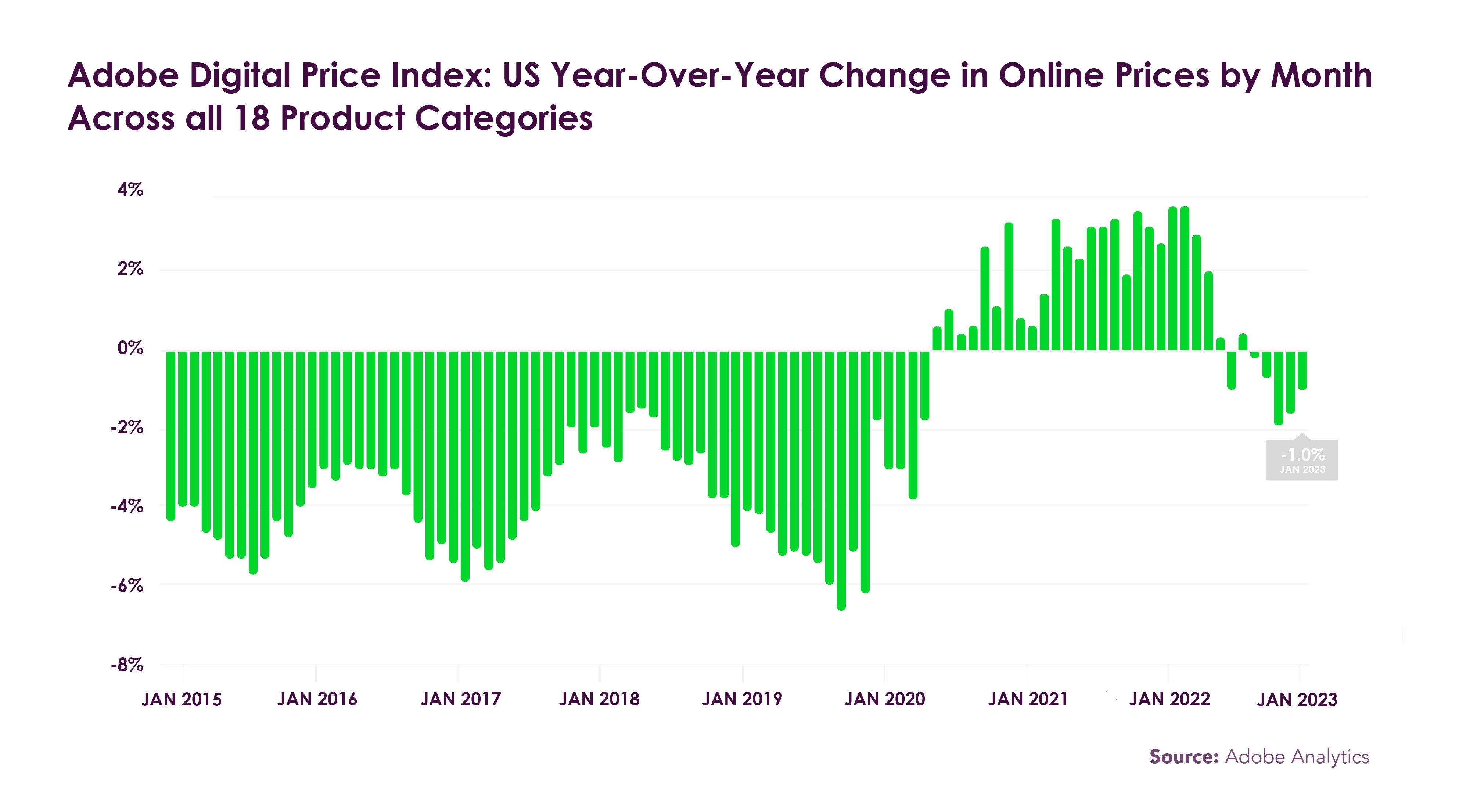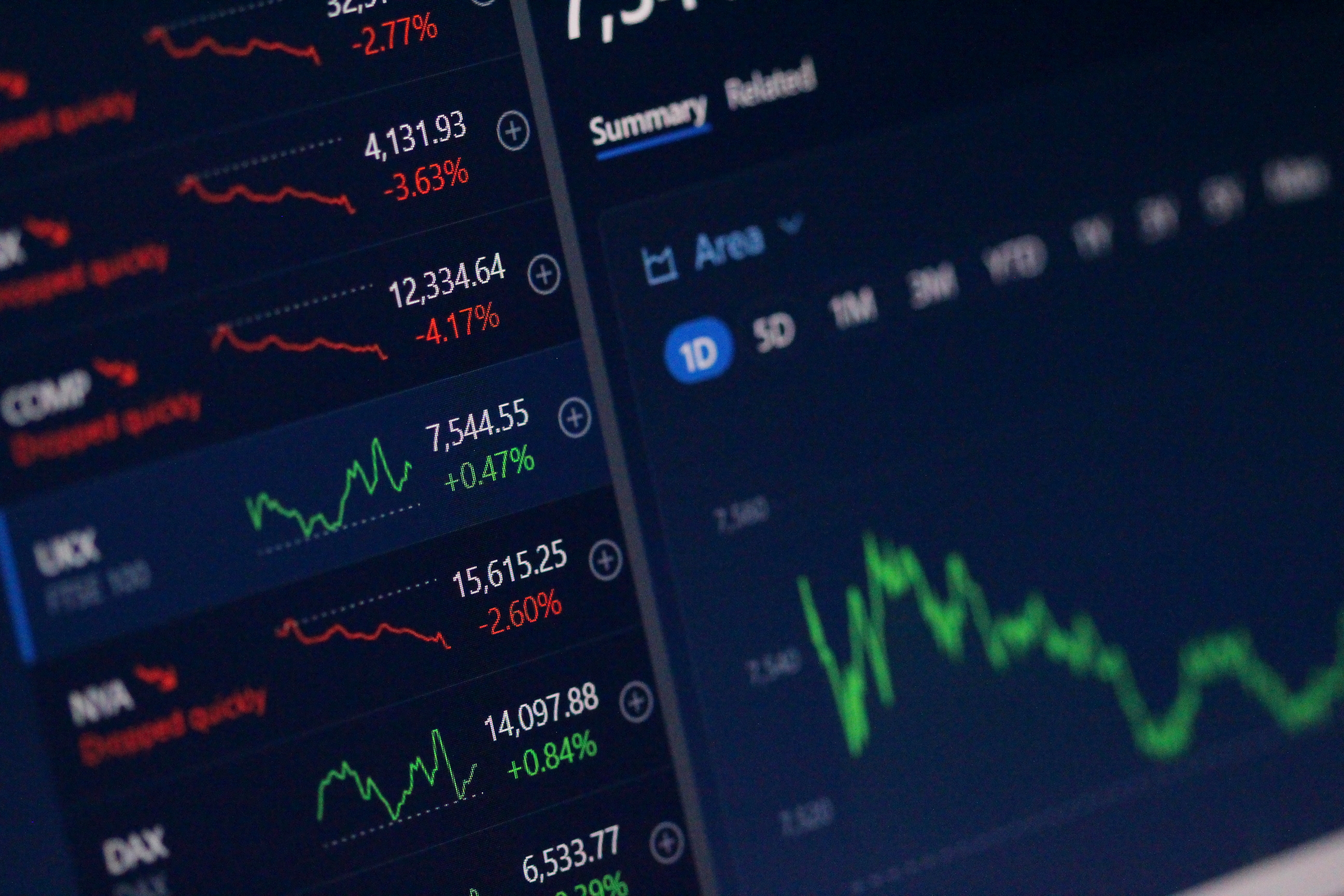Online shopping prices saw a 1% decrease in January 2023, compared to prices during the same time in 2022. In a consistent trend with decreasing e-commerce prices, January became the fifth month in a row that year-on-year online prices have dropped, according to the Adobe Digital Price Index.
Major categories like such as electronics, computers, home appliances and garden products all experienced major price drops thanks to the impact of inflation on the consumer’s wallet, which has culminated in year-on-year (YoY) decreases. Computers saw the largest price decline, seeing a 15.8% drop; with electronics seeing an 11.9% drop. Home appliances decreased by 2.5% and home-and-garden products fell by 3.5%. Sporting goods saw 6.4% and books 3%.
However, one category that has not seen decreases of late is groceries, which has seen a YoY 12.6% increase in January. Tools and the home improvement category have also seen an increase of 6.9%. These two categories, especially groceries, have continued to see consistent support from consumers, despite a change in purchasing decisions, including buying in bulk, waiting for specials, or changing to white-label brands.

Although prices for home-and-garden products fell 3.5% YoY, this came after numerous months of the category seeing steady price increases. Consumers have long supported this category thanks to a massive shift in how consumers like to spend their time and money during and post the covid-19 pandemic. Families and young professionals have, across the board, begun spending more time at home between 2020 - 2022.
Overall, these decreases are also a result of the global inflation crisis that is finally settling down after many months of high prices.
As predicted by Aline Schuiling, a Senior Economist Eurozone at Group Economics of ABN AMRO Bank, who shared her inflation predictions at our Price Points Live event in Amsterdam in October 2022, inflation will drop drastically from 2022 - 2023, and then even more so in 2024.
What this means for brands and pricing
There are different methods of adjusting prices. It is always important to look not only at the price alone, but the availability, the data, how well a product is selling, and the associated marketing budget. For some products, a downward price adjustment will be necessary because there is more competition for the lower price. In addition, the behavioural data from Google Analytics and the profitability of Google advertising efforts can be taken into account when deciding if a price should be reduced, maintained or even raised. Profitability is more decisive in the end, and this can be increased across assortments of data and insights on the respective products and categories are available.
For brands with a dynamic pricing solution like Omnia’s, reacting to these market changes is automated and immediate. However, for brands who are trying to keep up with changing consumer behaviour and the impact of falling inflation, it will be a constant battle of walking one step forward and two steps back.





